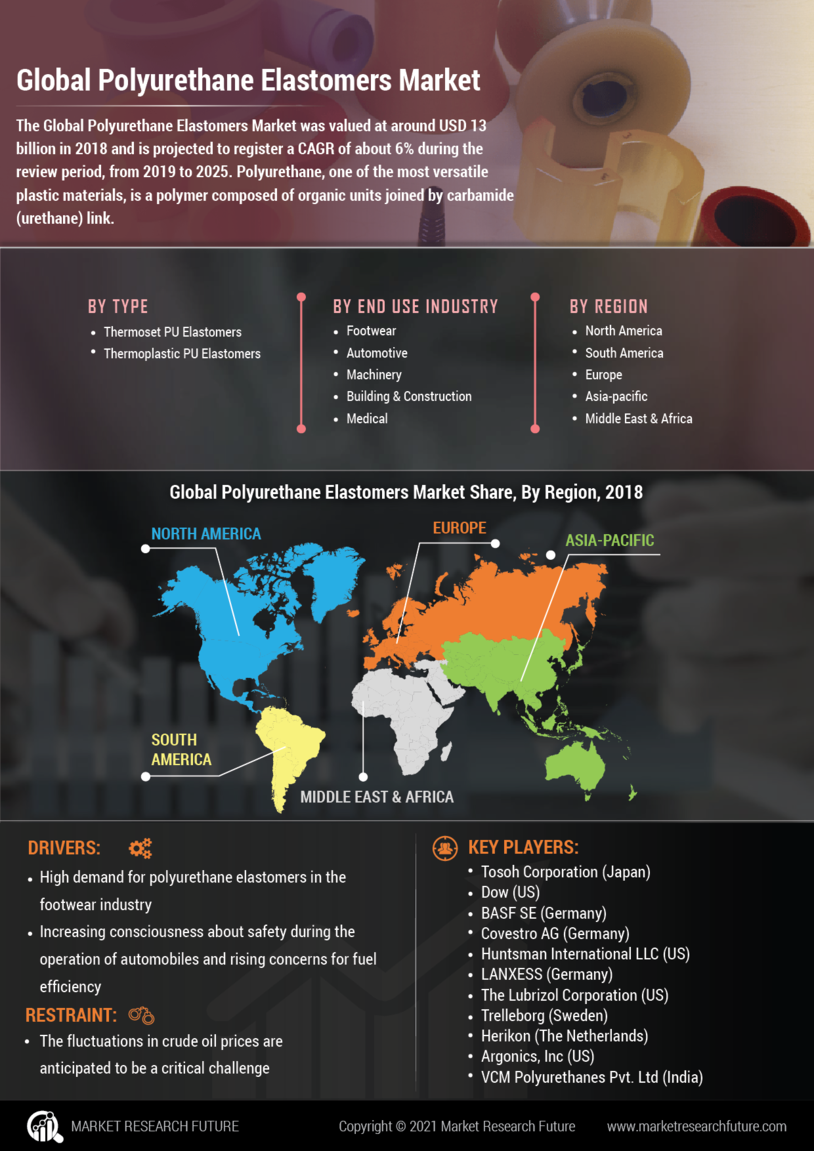Market Trends and Projections
The Global Polyurethane Elastomers Market Industry is poised for substantial growth, with projections indicating a market value of 13 USD Billion in 2024 and an anticipated increase to 23.7 USD Billion by 2035. The compound annual growth rate is expected to be 5.6% from 2025 to 2035, reflecting the industry's resilience and adaptability. Key trends influencing this growth include advancements in technology, increasing demand from various sectors, and a heightened focus on sustainability. These factors collectively shape the future landscape of the polyurethane elastomers market.
Increasing Focus on Sustainability
Sustainability is becoming a central theme within the Global Polyurethane Elastomers Market Industry, as manufacturers seek to minimize environmental impact. The shift towards eco-friendly materials, including bio-based polyurethane elastomers, aligns with global sustainability goals and consumer preferences. This trend is particularly evident in industries such as packaging and automotive, where companies are increasingly adopting sustainable practices. As awareness of environmental issues grows, the demand for sustainable polyurethane elastomers is expected to rise, further propelling market growth and encouraging innovation in material development.
Rising Demand in Automotive Sector
The Global Polyurethane Elastomers Market Industry experiences a notable surge in demand from the automotive sector, driven by the need for lightweight and durable materials. Polyurethane elastomers are increasingly utilized in various automotive applications, including seals, gaskets, and interior components. This trend is expected to contribute significantly to the market's growth, with projections indicating a market value of 13 USD Billion in 2024. As automotive manufacturers prioritize fuel efficiency and performance, the adoption of polyurethane elastomers is likely to expand, thereby enhancing the overall market landscape.
Growth in Construction Applications
The construction industry plays a pivotal role in the expansion of the Global Polyurethane Elastomers Market Industry. These materials are favored for their excellent mechanical properties and resistance to environmental factors, making them ideal for applications such as flooring, insulation, and coatings. The increasing focus on sustainable building practices and energy-efficient materials further propels the demand for polyurethane elastomers. As the construction sector continues to evolve, the market is projected to reach 23.7 USD Billion by 2035, reflecting a robust growth trajectory driven by innovative applications and regulatory support.
Expanding Applications in Healthcare
The healthcare sector is emerging as a significant driver for the Global Polyurethane Elastomers Market Industry, with applications ranging from medical devices to prosthetics. Polyurethane elastomers are valued for their biocompatibility, flexibility, and durability, making them suitable for various healthcare applications. The increasing demand for advanced medical technologies and devices is likely to boost the market, as manufacturers seek high-performance materials that meet stringent regulatory standards. This trend indicates a promising future for polyurethane elastomers in healthcare, contributing to the overall market growth.
Technological Advancements in Production
Technological advancements in the production of polyurethane elastomers are transforming the Global Polyurethane Elastomers Market Industry. Innovations in manufacturing processes, such as improved polymerization techniques and the development of bio-based alternatives, enhance the performance and sustainability of these materials. These advancements not only increase efficiency but also reduce production costs, making polyurethane elastomers more accessible to various industries. As a result, the market is likely to witness a compound annual growth rate of 5.6% from 2025 to 2035, indicating a strong potential for growth driven by continuous innovation.

















Leave a Comment